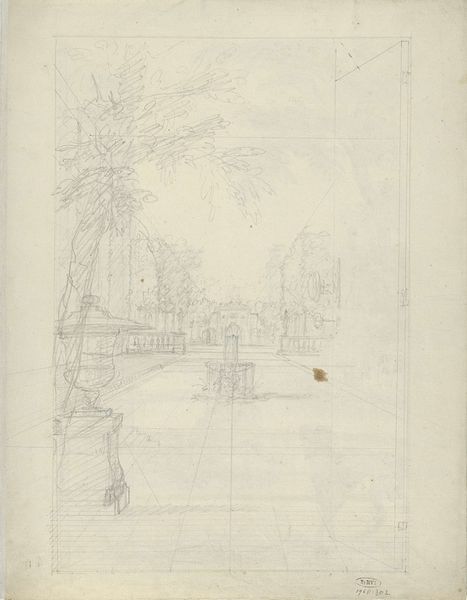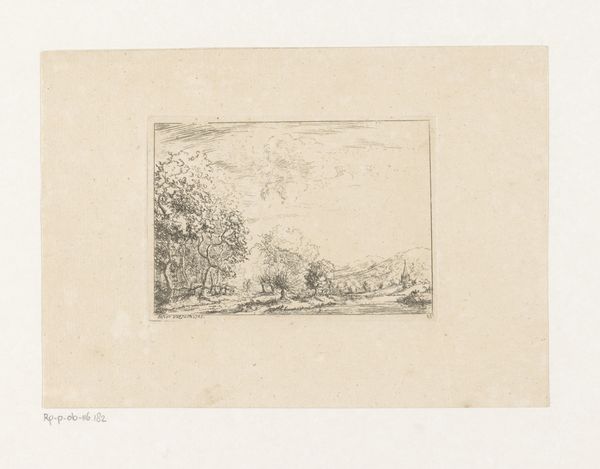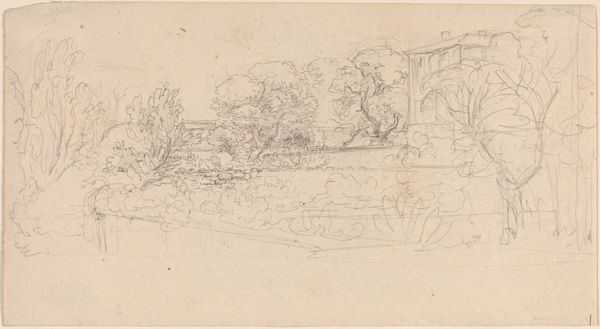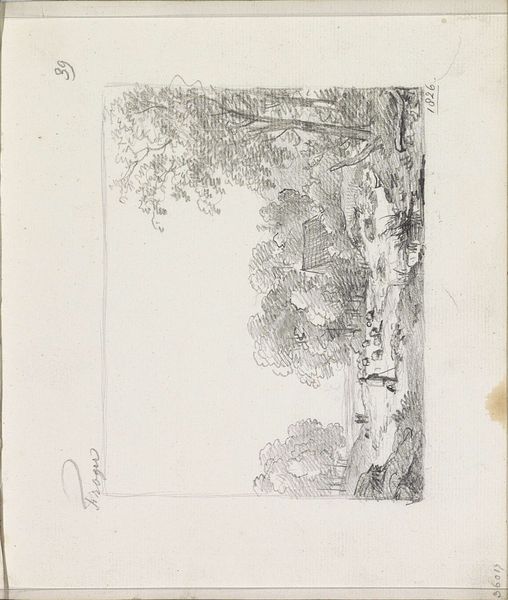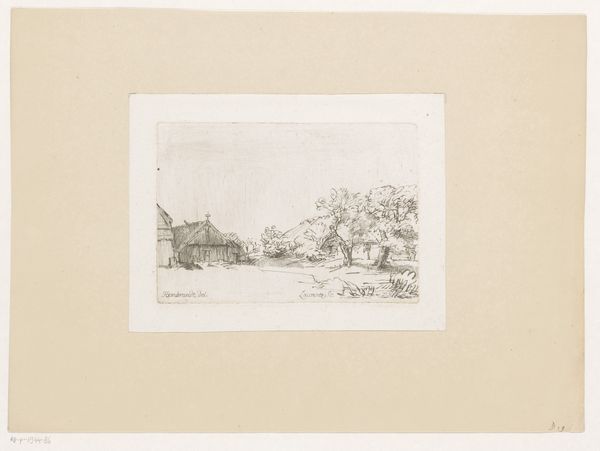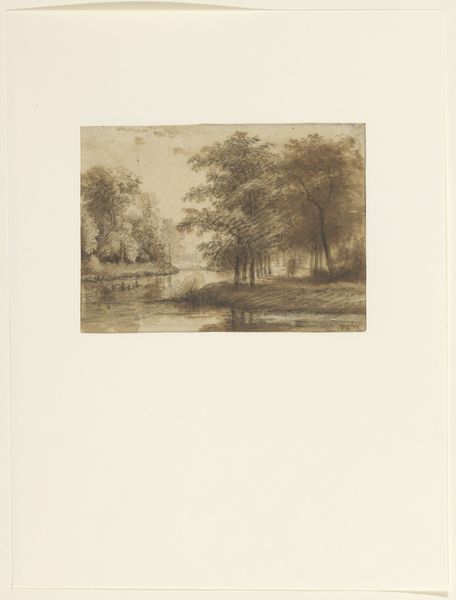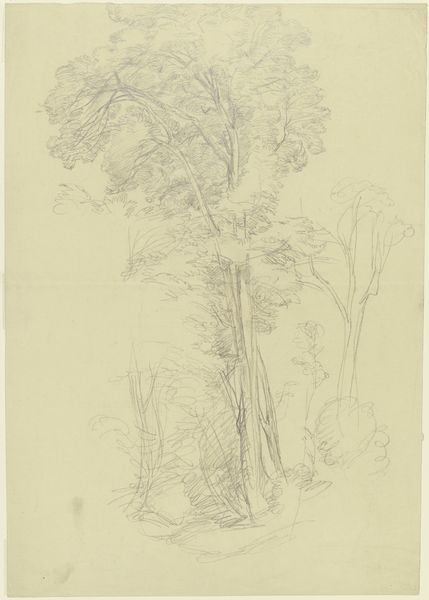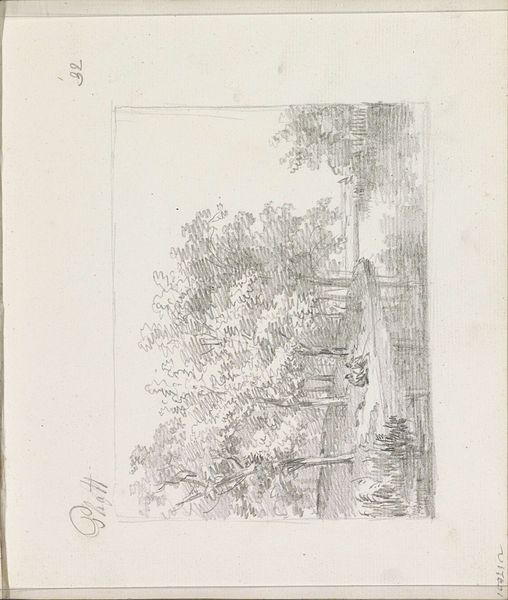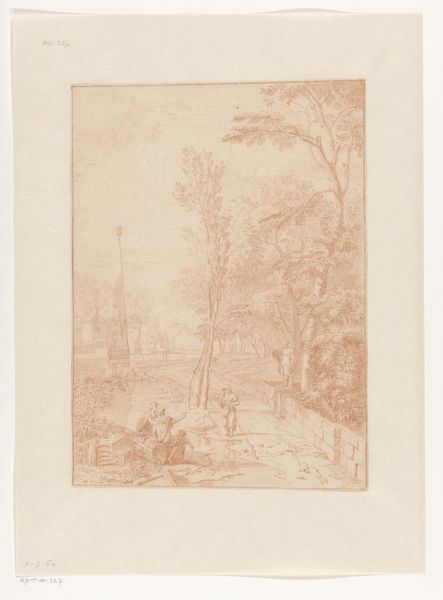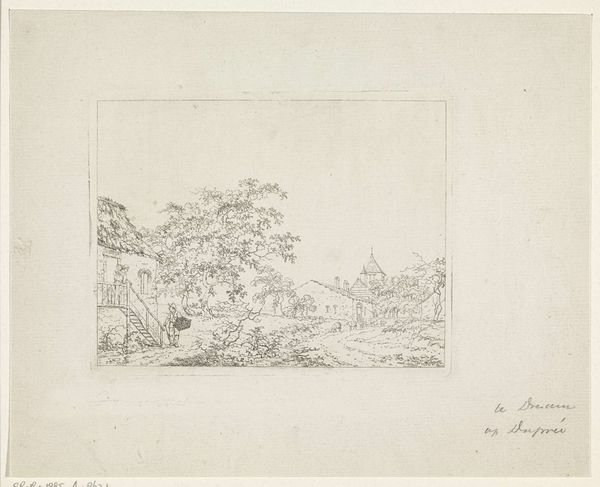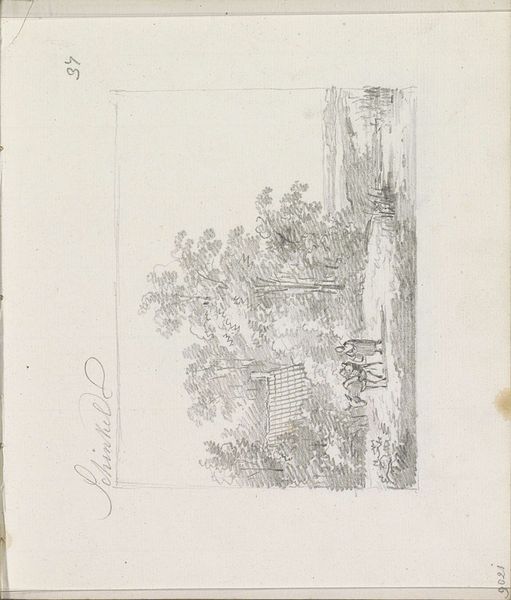
drawing, paper, pencil
#
pencil drawn
#
drawing
#
garden
#
neoclacissism
#
light pencil work
#
pencil sketch
#
landscape
#
classical-realism
#
paper
#
pencil
#
pencil work
#
watercolor
Dimensions: height 84 mm, width 138 mm
Copyright: Rijks Museum: Open Domain
Editor: This is "Classicistisch bouwwerk in tuin" or "Classical Building in a Garden" by Dionys van Nijmegen, created sometime between 1715 and 1798. It's a pencil drawing on paper. The scene is delicately rendered, but also feels slightly… unfinished, somehow. What aspects of its composition stand out to you? Curator: Formally, the drawing showcases a masterful use of line to define space and form. Observe the meticulous attention to detail in the architectural rendering, juxtaposed against the softer, more atmospheric treatment of the surrounding foliage. The artist uses light and shadow to create depth and dimension. Is the use of proportion interesting? Editor: Definitely. I notice how the structure adheres to classical ideals, particularly the balance and symmetry. Yet, the soft pencil work and open composition make it seem less rigid. The trees aren't as defined as the structure; can we speak to the significance? Curator: The strategic placement and tonal variation creates depth, and this serves to subtly lead the viewer’s eye from the architectural focal point, further back into an undefined space. The semiotic weight creates a contrasting, natural, Arcadian surrounding. The work exists not just as a representation of form, but a commentary on order versus chaos. Editor: That's a great way to put it, because without the setting there isn't anything really "setting" it apart as itself; rather, you are merely staring at a drawing of architectural form. Curator: Precisely! By studying these elements, the artwork invites us to consider their individual, intrinsic impact; each facet works together in complex dialog. Do you think the "garden" contrasts with the building well, now that we are taking a second look? Editor: It certainly does! Thinking about this interplay elevates my understanding of the piece as a whole. Curator: Indeed, that we consider how we construct, then interact, with our setting and form around it!
Comments
No comments
Be the first to comment and join the conversation on the ultimate creative platform.
